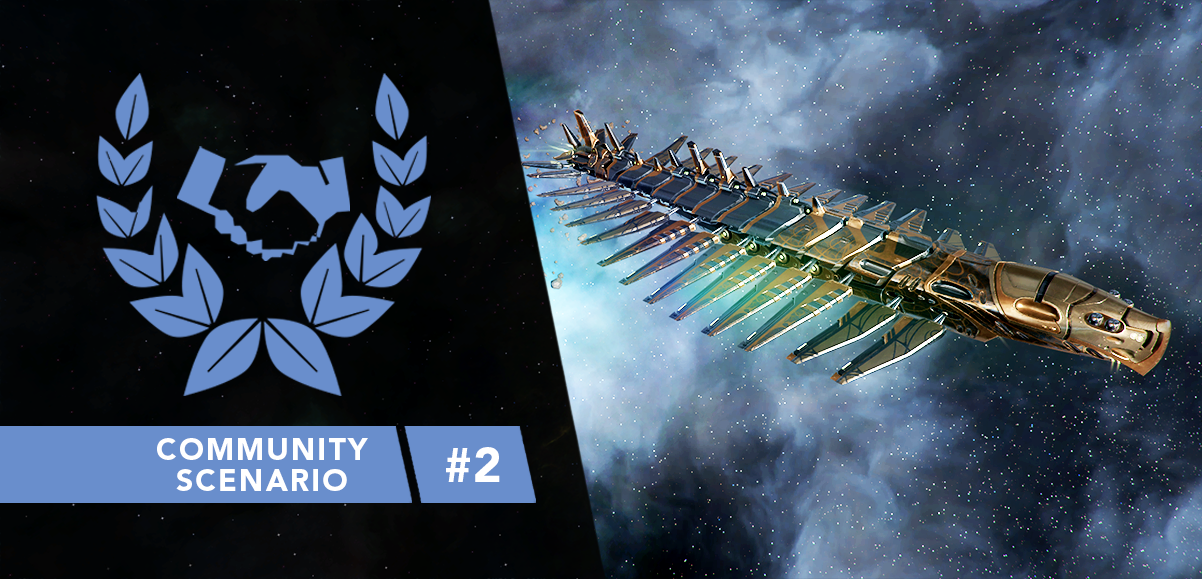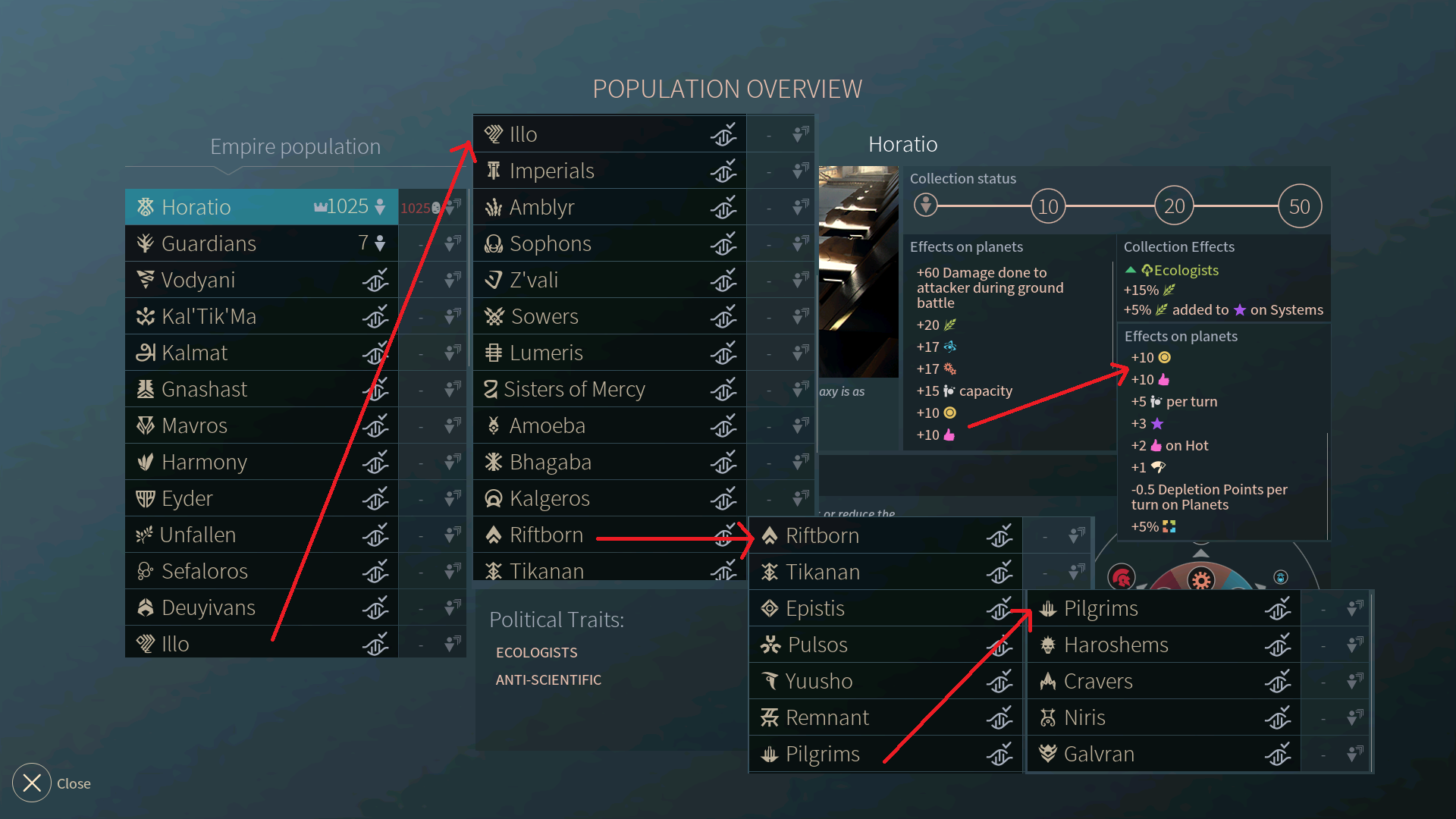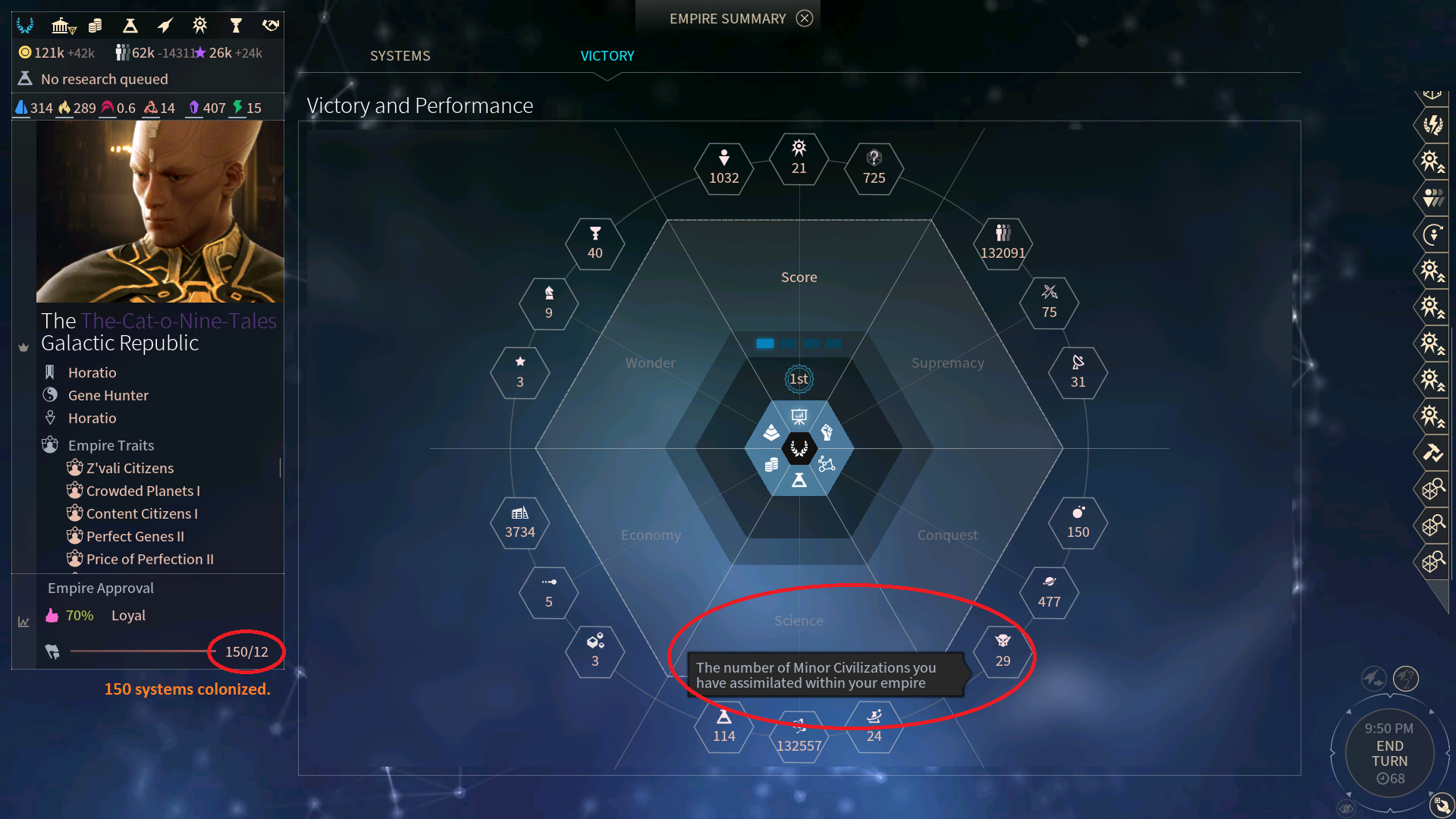Hey everybody,
Have you ever found yourself returning to the same settings time and again, all your games following familiar paths? Are you looking to extend your time in the Endless universe, but don't want to return to the same old sights? Then the Community Scenarios might be for you!
Every month, we will share saves and settings (and sometimes story) for our games meant to provide interesting challenges to seasoned players and newcomers alike. You can enter a hall of fame for each Scenario, or just share your experiences and discuss strategies.

Glorification of the Gorgeous
I remember the time before my epiphany, the time when I lived among people other than me. Those others could only ever see the abnormal, the unusual, the incomprehensible. To them, I was The Other. Perhaps I should have tried to help them understand. Instead, I left them behind, and withdrew to the furthest corner of the galaxy. They closed their eyes to the marvels of the galaxy, confined themselves to their own little worlds and their own little minds; ignorant of the luxuries and beauty of the galaxy, lost in their everyday drudgery. Horatio could never exist in a society so mundane. We are destined for a greater purpose.
The time has come at last for us to make our mark upon history, to spread our beauty and brilliance across the worlds of this galaxy. No longer shall the wondrous and exotic places lie barren; they will be marvelled at by the only beauty greater than their own, Horatio. No longer shall the galaxy be left in the hands of the uncouth who refuse to accept the summit of perfection, Horatio.
Yet as we pursue this lofty goal, we realize that even the pinnacle of creation could be greater still. We will show grace to those who once shunned us. We will welcome them in our empire, nurture them, and allow them to contribute to our exaltation as they become one with Horatio. Even those who oppose us shall be shown mercy in their defeat, and be elevated by our hand.
All shall join in the glorification of the gorgeous.
In this scenario, we have placed Horatio in a vast, heavily populated galaxy full of luxuries, anomalies, and other curiosities of the Endless Universe. Being Horatio, the goal of the scenario is simple: Become the most perfect Horatio you can be by splicing as many population types as possible by turn 100.
You can join us next Monday, March 11th, at 4:30PM CET for a stream of this scenario. Click here to set your event reminder on Twitch.
Have fun!
Amplitude
Endless Space 2 Settings
| Competitors:
Horatio (Player) Sophons (AI) Cravers (AI) Lumeris (AI) Vodyani (AI) United Empire (AI) Riftborn (AI) Unfallen (AI) | Difficulty: Any | Game Speed: Normal | Victory Types: Score Objective: Splice as many types of population as possible by turn 100 |
| Galaxy: Exceptional Spiral-8 | Constellations: Many | Density: High | Seed: 49964 |
| Galaxy Age: Young | Node Connectivity: High | Pirate Difficulty: Normal | Minor Factions: High/Hard |
| Resources: High | Curiosities: High | Anomalies: High | Special Nodes: High |
| Random Events: Abundant | Academy Quest: On | Multiplayer Quests: On | Behemoth Quest: On |
Saves: No DLC (Hard Difficulty) CS1903-None.sav, All DLC (Hard Difficulty) CS1903-All.sav





















































































